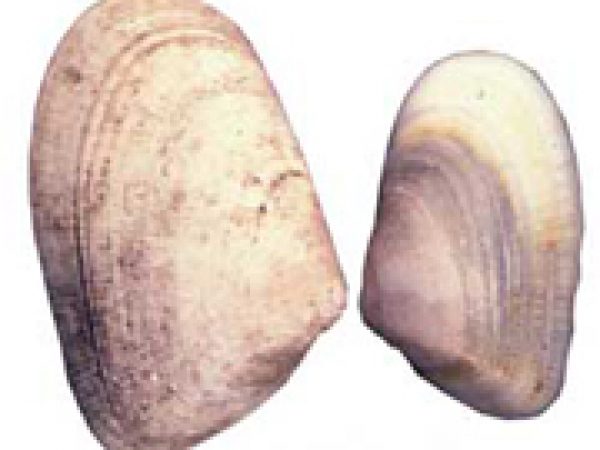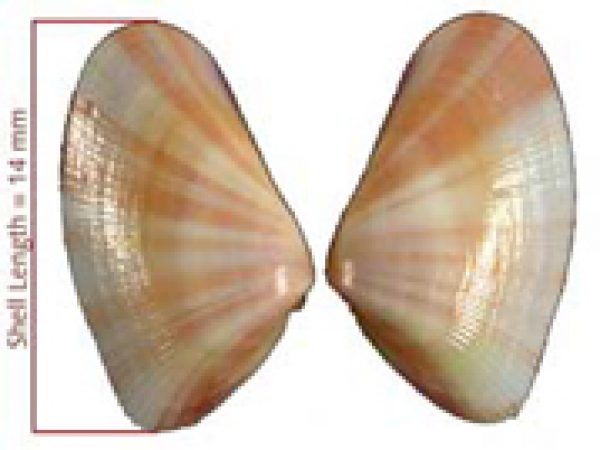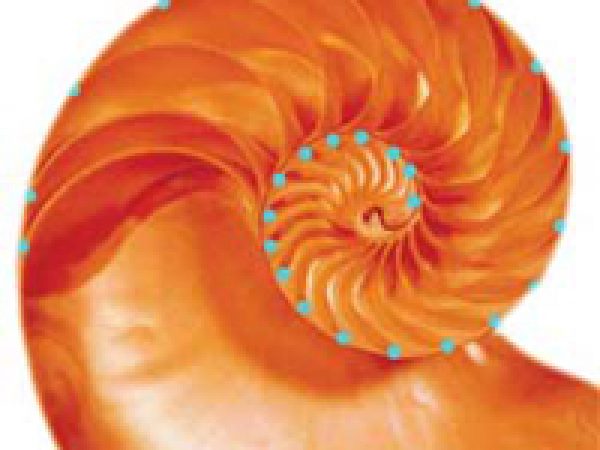Sclerochronology is the study of astronomical cycles recorded in the hard tissues of organisms such as the shells of mollusks and corals or the teeth and horns of mammals. It is analogous to dendrochronology, the study of annual rings in trees. Sclerochronology comes from the Greek word ‘skleros’ meaning hard and ‘chronology,’ which refers to the science of ordering events in time.
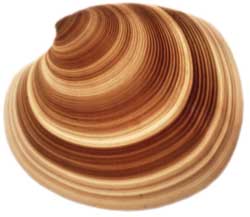
During your last trip to the beach you may have noticed the concentric rings on seashells you pulled from the sand and wondered if you could count them to determine the age of the animal (Figure 1) like you would tree rings. In the third century B.C., Aristotle realized the same possibility. In his Historia Animalium he writes, “Both the murex and the creyx (trumpet-shell) are long lived. The murex lives for about six years; and the yearly increase is indicated by a distinct interval in the spiral convolution of the shell.” This is among the earliest speculations that hard parts of aquatic organisms record life history and environmental information.
One of the most fascinating discoveries in sclerochronology, which helped launch the field, was made by Cornell paleontologist J.W. Wells in 1963. He reported that living corals formed 365 daily growth increments per year in their skeletons while fossil corals from the Devonian Period formed 400 per annum, suggesting that a Devonian day, 400 million years ago, was shorter than today by about two hours. The greater number of daily growth increments in the fossils seemed to confirm what geophysicists were measuring, that Earth’s rotational period is gradually slowing over geologic time.

At the Florida Museum of Natural History, we have been interpreting the environmental recordings contained in mollusk shells for many years. Our investigations involve some of the longest- and shortest-lived marine mollusks found in nature.
Early research by Doug Jones found that cross-sectioning shells of the ocean quahog (Arctica islandica), a marine clam from the North Atlantic, exposed alternating patterns of light and dark shell growth increments (Figure 2). The combination of one light and one dark increment represents one year of life, very much like the early and late wood of tree rings. A count of the growth increments in thousands of specimens revealed that many were over 100 years old. One specimen collected live in 1976 contained over 200 annual increments (Figure 3). Before George Washington was elected president, this specimen would have settled into the silt and mud of the New York Bight. A recently studied shell was discovered to have 374 annual growth increments, making the ocean quahog one of the longest-lived species in the animal kingdom.
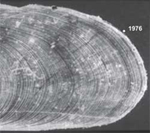
At the other end of the spectrum is the variable coquina clam, Donax variabilis, one of the most common and recognizable shells from the sandy beaches of the southeastern U.S. (Figure 4).
Native Americans living along the Florida coast between 5700 BP and 400 BP (BP = years before present) consumed great quantities of these tiny animals. A two-year study of growth and longevity in living coquina clams, along with seawater temperature variability, has yielded remarkable results. We analyzed the oxygen isotope ratios (18O/16O) in coquina shells as a means of calculating the temperature of seawater in which the shells grew. This approach has gained wide usage among scientists tracking changes in climate throughout geologic history. As mollusks grow their shells, they incorporate oxygen isotopes in the same ratio as found in seawater and as a function of water temperature. We discovered that modern coquina shells faithfully record the temperature of the seawater in which they live. The range of temperatures calculated from micro-sampling across the shell showed that modern coquina clams grow for only three to four months or so.
When this technique was used on coquina shells from Native American shell middens dating between 5,700 BP and 3,600 BP, we found that the archaeological shells grew for about six months and were around 10 millimeters larger than the modern specimens from northeast Florida (Figure 5). The reason for the difference in longevity and shell size remains a mystery. The oxygen isotopes also indicate that during this time interval seawater temperatures were around 3.5 degrees Celsius higher than today. This coincides with a climate event called the Holocene Thermal Maximum or “Hypsithermal.” The temperature range recorded in the archaeological shells also indicates that Native Americans collected coquina clams seasonally during the late summer and autumn.
The value of natural history collections as a resource for interpreting the modern environment as well as assessing environmental and cultural change is enormous. Each mollusk specimen potentially represents a unique record of natural or cultural history. Figure 6 shows the growth septa of a chambered nautilus. Studies have not yet determined how frequently the chambers are formed. At the Florida Museum of Natural History, Jones and Irvy Quitmyer continue their research in sclerochronology to develop techniques that improve the fidelity of the recordings of life history contained in the shells of mollusks.
Doug Jones is Director of the Florida Museum of Natural History. He is a paleontologist interested in the biological, ecological, and climatological records preserved in mollusk shells. Irvy Quitmyer is a zooarchaeologist at the Florida Museum of Natural History who studies growth, longevity and climate records in modern, archaeological and fossil mollusk shells. His geographic area of study covers the southeastern United States, Caribbean and Central America.
Learn more about the Invertebrate Zoology at the Florida Museum.
